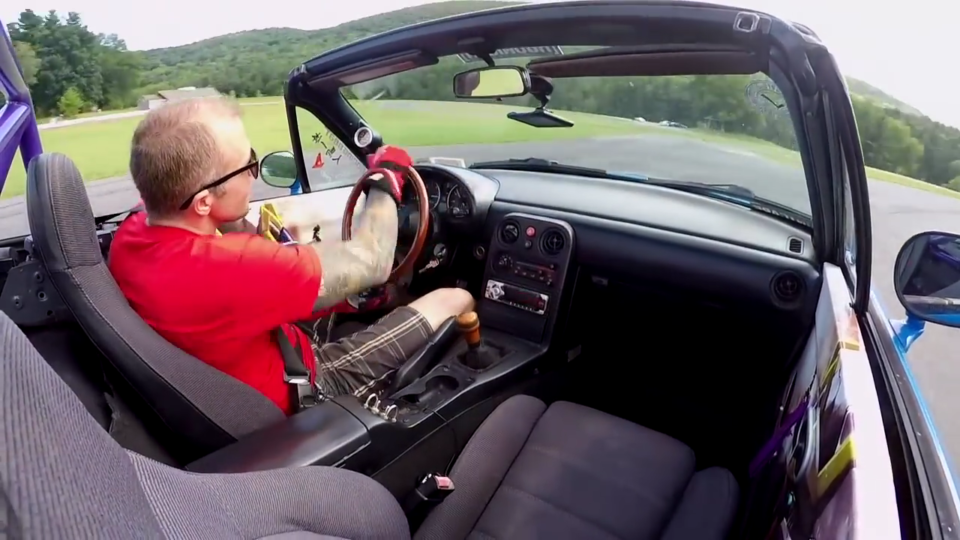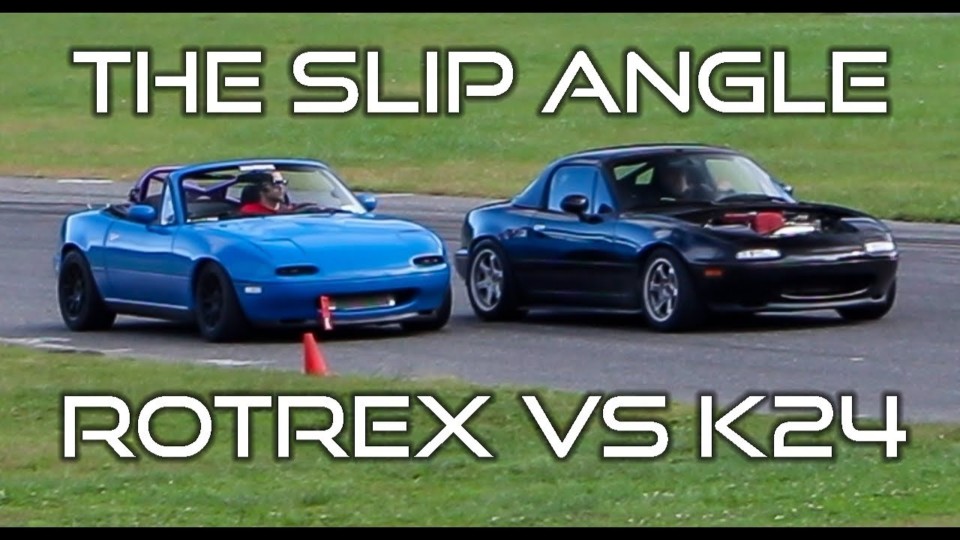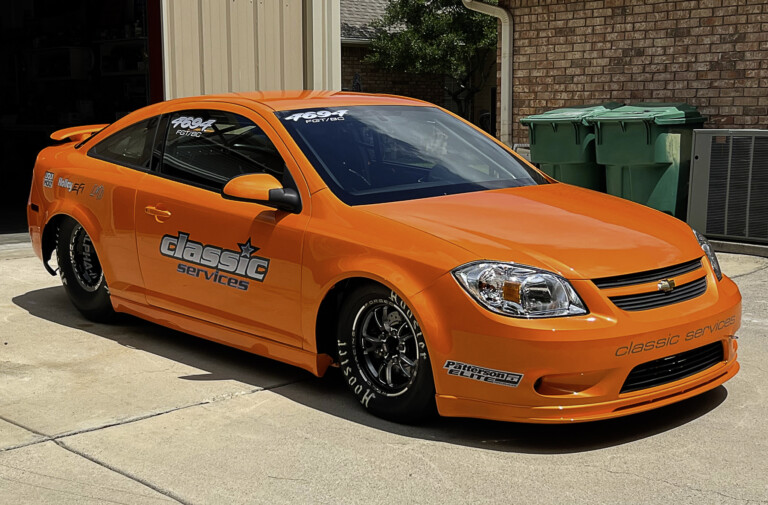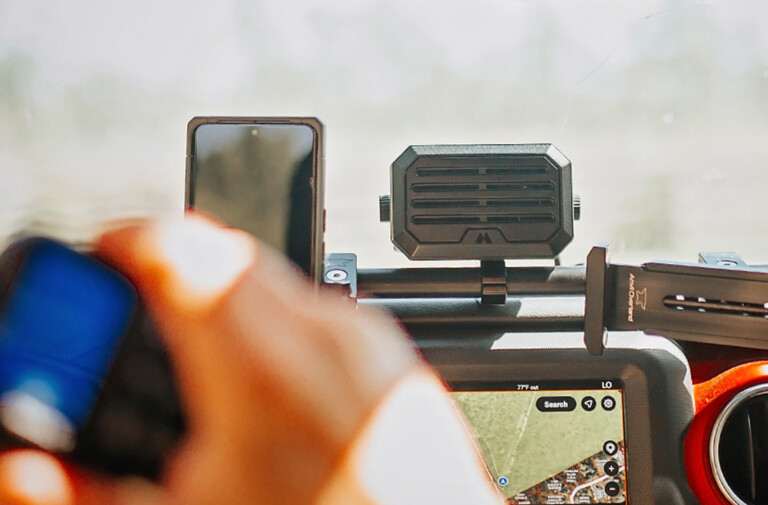Maybe going off the title might be slightly misleading here, as the choice in powerplant isn’t what decides the winner. The controls are in place: the shared NA chassis, the similar levels of peak power, and two drivers with a penchant for oversteer. There are other decisive elements that dictate the victor on Lime Rock’s tight and technical autocross course, where the short-wheelbased Miatas are ranked on the way they handle hairpins. With few straightaways to reward any advantage in peak power, chassis balance is the key.
The supercharged car’s 1.8-liter motor, fitted with a Rotrex C30-84 supercharger, produces some 245 horsepower and 185 lb-ft of torque at the wheels. That thrust is sent back via a factory Torsen differential to the BF Goodrich Rival S tires. It also enjoys Flyin’ Miata’s V-Maxx coilovers and swaybars for added stability, a rollbar for some protection, and a little stiffening. These tweaks amount to similar, but not identical, levels of chassis modification to the competing car.
The salient differences aren’t clear from a spec sheet, but they are obvious after two hot laps. Bear in mind that the supercharged car has the blower, the ancillaries, and the iron 1.8-liter block sitting out over the front axle to foul the weight distribution. Maybe that contributes to its snappier breakaway. Whatever the reason, it certainly looks like more of a workout, and considering the size of the driver’s arms, that’s saying something. The black car is clearly more responsive through the turn-in phase and requires fewer steering inputs, though that can’t be attributed entirely to the weight distribution and whatever advantages the all-aluminum K24 offers there.
The K24-powered car has another 0.6-liters of displacement to help point it out of slower corners. The power — undisclosed, but likely somewhere around 240 horsepower — is sent through a ZF six-speed onto a Pontiac Solstice’s differential and then to Hankook RS4 tires.
The Ohlins dampers may cost more than the coilovers in the supercharged car, but it seems the supporting suspension modifications help bring out the best in the chassis. The real difference comes down to the way the black car has been fine-tuned for this sort of competition. Due to being corner-balanced, rose-jointed, and aligned properly, the black car is much more communicative, and that’s obvious in its composure and predictability.
Interestingly, acceleration in a straight line is very close. However, the prevalence of short, second-gear hairpins at Lime Rock’s autocross course are what test these two cars the most. In the case of the Honda-powered car, the greater predictability helps point it in the intended direction. The added torque helps facilitate any extra rotation when the front tires fall short.

The multiple corrections mid-corner and instance of snap oversteer (5:26) show the supercharged car isn’t quite as friendly or predictable.
Interestingly, the two drivers determine the main difference in performance to be the way which the cars transition from oversteer to understeer, or vice-versa. As the black car is better sorted, more predictable, and better balanced, the black car has the advantage in “exploitability,” as Ryan, the driver of the black car, mentions. “You can’t go ten-tenths [in the blue car] and not make a mistake here or there because the tire just doesn’t communicate with you quite as well,” he concludes. It just goes to show that as important as torque is, a strong line of communication between the driver and the car count for far more, especially at a track as technical as this.






















